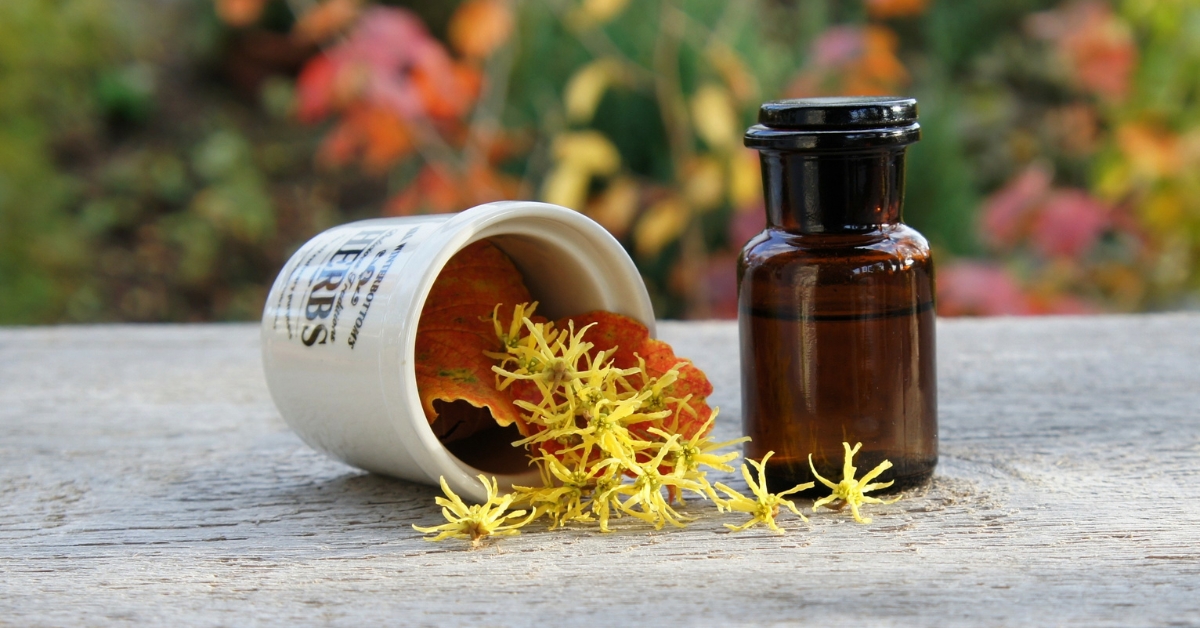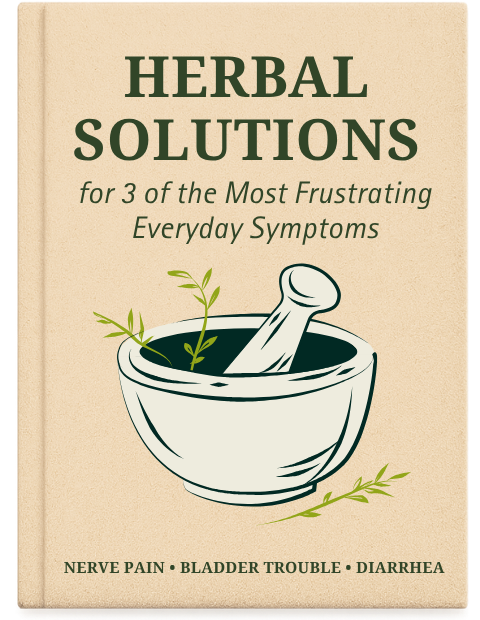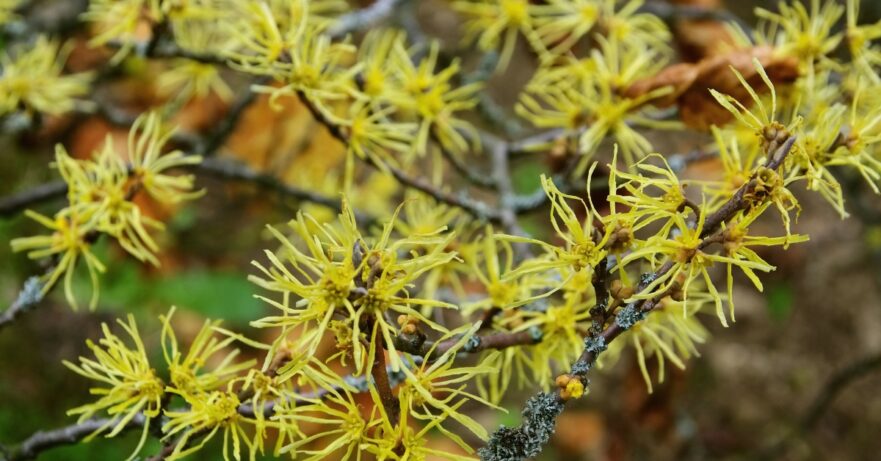In this monograph about witch hazel:
📖 Introduction | 🌱 Botanical Description | 📜 Traditional Uses | 🔍 Phytochemistry | ✨ Applications and Uses | 🛡️ Safety Profile
📖 Introduction
Witch hazel (Hamamelis virginiana) is a plant native to North America, renowned in herbal medicine for its astringent and anti-inflammatory properties. Traditionally used by Native Americans for various ailments, it continues to be a staple in modern herbal remedies, particularly for skin care and mild vascular conditions.
| English Name | Witch hazel |
| Latin Name | Hamamelis virginiana |
| Parts Used | Bark, leaf |
| Traditional Uses | Easing symptoms of hemorrhoids, treating bruises, varicose veins, and inflammation |
| Herbal Actions | Astringent, anti-inflammatory |
🌱 Botanical Description
Scientific Classification
Witch hazel belongs to the Hamamelidaceae family.
Physical Characteristics
This deciduous shrub can grow up to 20 feet in height, though it typically reaches heights of 12 to 15 feet. It features distinctive yellow flowers and broad, ovoid leaves. The bark and leaves are the primary components used medicinally.
Natural Habitat and Cultivation Details
Witch hazel thrives in the understory of forested areas across Eastern North America. It prefers well-drained soils and partial shade and is typically harvested in the late fall.
📜 Traditional Uses
Various cultures have used Witch hazel for its medicinal properties, particularly for skin conditions and mild vascular issues. Its use in folklore and herbal medicine ranges from treating hemorrhoids and varicose veins to soothing inflamed or irritated skin.

🔍 Phytochemistry (Active Constituents)
Witch hazel contains several active constituents that contribute to its therapeutic effects:
- Tannins: Including hamamelitannin, these provide strong astringent properties that help tighten and tone the skin, reduce inflammation, and support tissue healing. However, excessive use of tannins may cause skin dryness or irritation in sensitive individuals.
- Flavonoids: Quercetin and kaempferol have antioxidant, anti-inflammatory, and vasoprotective effects, helping reduce inflammation and protect the skin from oxidative damage.
- Essential Oils: Although present in small amounts, these contribute mildly to its soothing effects on the skin and mucous membranes.
- Saponins: These compounds are minimal in witch hazel and play a less significant role in its therapeutic action, but they may contribute slightly to its anti-inflammatory effects.
✨ Applications and Uses
Witch hazel is extensively used in herbal medicine for:
- Skin Care: Applied topically to reduce inflammation, control acne, and soothe irritations like diaper rash or sunburn. However, it may cause irritation or dryness in sensitive skin or when used excessively. Patch testing is recommended.
- Vascular Health: Used to reduce the appearance of varicose veins and support the management of hemorrhoids due to its vasoconstrictive and anti-inflammatory effects. Its astringent properties help tighten the skin and shrink swollen tissue, temporarily relieving external hemorrhoid symptoms.
- Mucosal Health: Employed as a mild gargle for soothing sore throats or as a wash to reduce the discomfort of minor oral irritations. However, oral use should be done with caution, as witch hazel can cause gastrointestinal irritation if ingested in significant amounts.
Research supports these uses, highlighting witch hazel’s role in reducing inflammation, improving skin healing, and protecting against free radical damage. However, more human clinical trials are needed to fully substantiate some of its traditional uses.
🛡️ Safety Profile
Witch hazel is generally safe for most people when used topically. However, its tannin content can potentially lead to skin irritation, especially in sensitive individuals or with prolonged use.
Due to its strong astringent properties, oral use is not recommended, as it can cause gastrointestinal discomfort, including stomach irritation and nausea. Always test on a small skin area before broader use to ensure no allergic reaction.
Although there are no well-documented significant interactions with medications, some caution is advisable when using witch hazel, particularly during pregnancy or lactation, as its safety in these populations is not fully established. Additionally, combining witch hazel with other astringent substances may enhance its effects and increase the risk of irritation.
📃 Related Posts
🌱 Related Herbs

